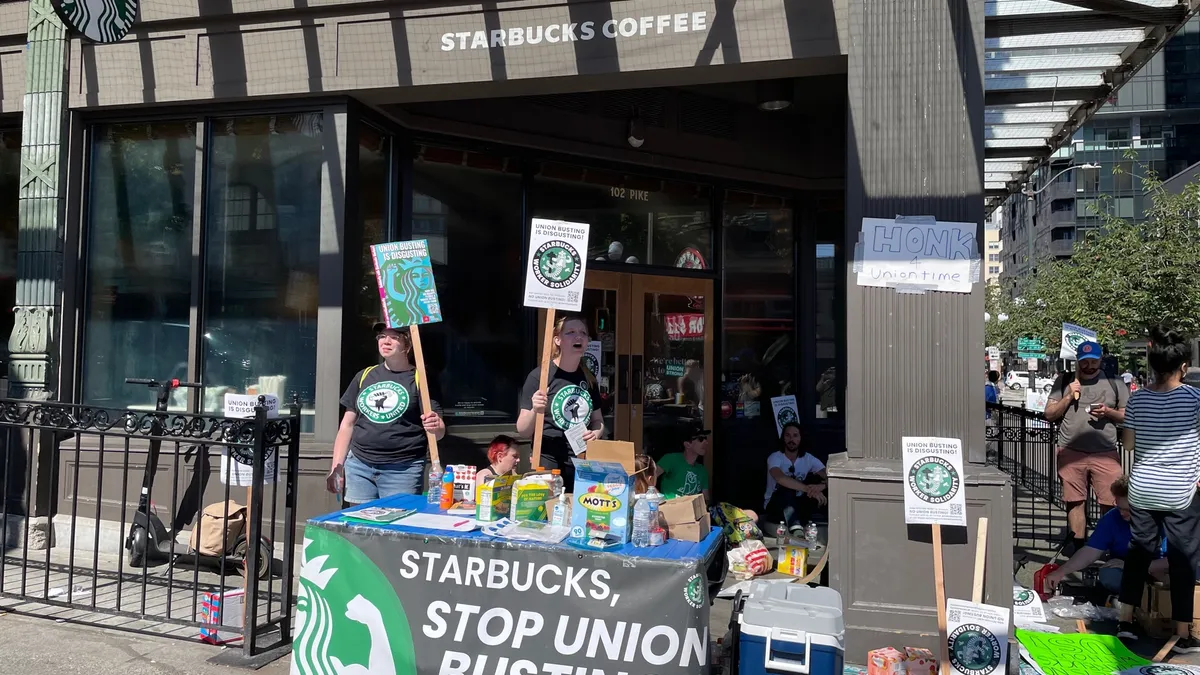Editor's note: Katie Clarey is one year into covering HR and continues to educate herself and readers on the building blocks of the field with her series, Back to Basics. If you're new to HR (or just need a little refresher), follow along as she speaks with experts and lays out the basics of federal employment law. She can be reached at [email protected].
After a glance at the news and a scroll through social media, three words — in addition to coronavirus, of course — will appear pervasive: termination, layoff and furlough. Though these words generally communicate bad news, they differ from each other.
To dig into the distinguishing factors, I asked an employment attorney, an HR consultant and benefits experts to give me the lowdown on what exactly the three terms mean and what consequences they carry for employers and employees alike.
Terminations: The simplest scenario
When an employer terminates an employee, it severs the employment relationship, Greensfelder, Hemker & Gale Officer T. Christopher Bailey told me. The same can be said when an employer "fires" or "discharges" someone.
When Congress passed the Family First Coronavirus Recovery Act (FFCRA), it sparked a lot of questions as to who would qualify for the paid sick leave and emergency Family and Medical Leave Act leave the law provided, Bailey said. Employers that planned to close, even temporarily, wanted to know if they would be required to provide the paid leave mandated by the statute, which took effect April 2.
"Initially, there was a push for employers to terminate. If you terminate someone, they're no longer an employee," Bailey said. Once the U.S. Department of Labor (DOL) published its guidance, employers learned that employees of a small business that closed due to a lack of work or a quarantine or isolation order would not be eligible for leave.
Where the consequences of layoffs and furloughs align...
Many employers changed their terminology to communicate to workers that "when all of this is over, we're going to want you back," Bailey said.
The terms layoff and furlough signal that change. "With layoffs and furloughs, there's some anticipation or expectation that at some point in time, the employment relationship will resume," Bailey said of the language employers used after better understanding FFCRA.
From Bailey's perspective, "there isn't much difference between the terms layoff and furlough," he said. He speculated employers use the word furlough more frequently under the COVID-19 circumstances because "it's a softer term."
This similarity is important. Whether furloughing or laying off employees, employers need to pay attention to something called the Worker Adjustment and Retraining Notification Act, or the WARN Act. This law requires employers to give workers advance notice of at least 60 calendar days before "qualified plant closings and mass layoffs," DOL says. "If you are furloughing employees, I personally would not draw a distinction for purposes of the WARN Act," Bailey said. "Using the term furlough does not necessarily get you out of your WARN Act obligations."
In other words, the WARN Act's use of the term layoff does not free employers that have issued mass furloughs from complying with its requirements. It's worth noting that the WARN Act is a federal law, but several states have passed similar legislation with varying notice requirements.
...and where they differ
From an operational standpoint, the terms layoff and furlough do differ in substantial ways.
When an employer lays off an employee, the employee becomes a former employee. Like a termination, a layoff severs the employment relationship, Adam Calli, founder and principal consultant of Arc Human Capital, told me.
When an employer furloughs an employee, the employment relationship is not yet severed. The furloughed worker may be required to stay home without pay, but the worker remains an employee. A furlough indicates a temporary circumstance. When work resumes, the employer does not need to rehire a furloughed worker like it would need to after a layoff, Calli said. "It's almost like [a furloughed worker] went on a leave of absence, but one that was initiated by the employer."
Another distinction comes in the form of benefits. Generally, an employee's health coverage during a furlough or layoff plays out according to the employer's health plan, according to the International Foundation of Employee Benefit Plans (IFEBP). The plan will indicate the number of hours employees must work to be eligible for health insurance coverage, and policies will spell out how workers can keep their coverage even if they lose eligibility.
When an employee loses eligibility for health insurance, they may be able to continue their coverage under the Consolidated Omnibus Budget Reconciliation Act (COBRA). A layoff would usher in the end of an employee's coverage; it would likely end on the last day of the same month the employer issued the layoff, IFEBP said. An employer would offer COBRA, though in some cases, it may continue benefits for a time.
Because furloughed employees can expect to return to work once the furlough ends, they generally get health insurance coverage during that time, according to IFEBP. The employer policy and the length of the furlough may change that, however. An employer may offer COBRA due to a reduction in hours upon a furlough, for instance. Or the benefits could continue without COBRA, in which case the employees may be obligated to pay their share of health plan premiums if the employer chose not to waive employee contributions.
Furloughs: A few extra factors at play
Furloughs are flexible in nature, which means they can cause confusion and dismay among workers. That's why good HR practitioners will communicate the details of a furlough with honesty and openness. "If you're going to do a furlough, you tell them as much as you can and maintain your flexibility," Calli said.
If an employer needs to initiate an open-ended furlough, it may choose to define an initial furlough period. At the end of that time, it can bring workers back or extend the timeline. It could also select a longer furlough to begin with, Calli said.
Whatever an employer decides, it must weigh business circumstances and remember its workforce. "There are employee emotions at play here. There are different approaches to it," Calli said. "There are a lot of factors that not only could but arguably should play into the decision."
It's worth noting that a furlough may morph into a layoff. An employer may find itself in the middle of a furlough when its resources dwindle severely. "The cost of labor can often be 70% of an organization's cost. If I'm trying to cut costs, that's the first place I'm looking," Calli said. At that point, "you go to your employees and say, ‘You're getting laid off.'"

















